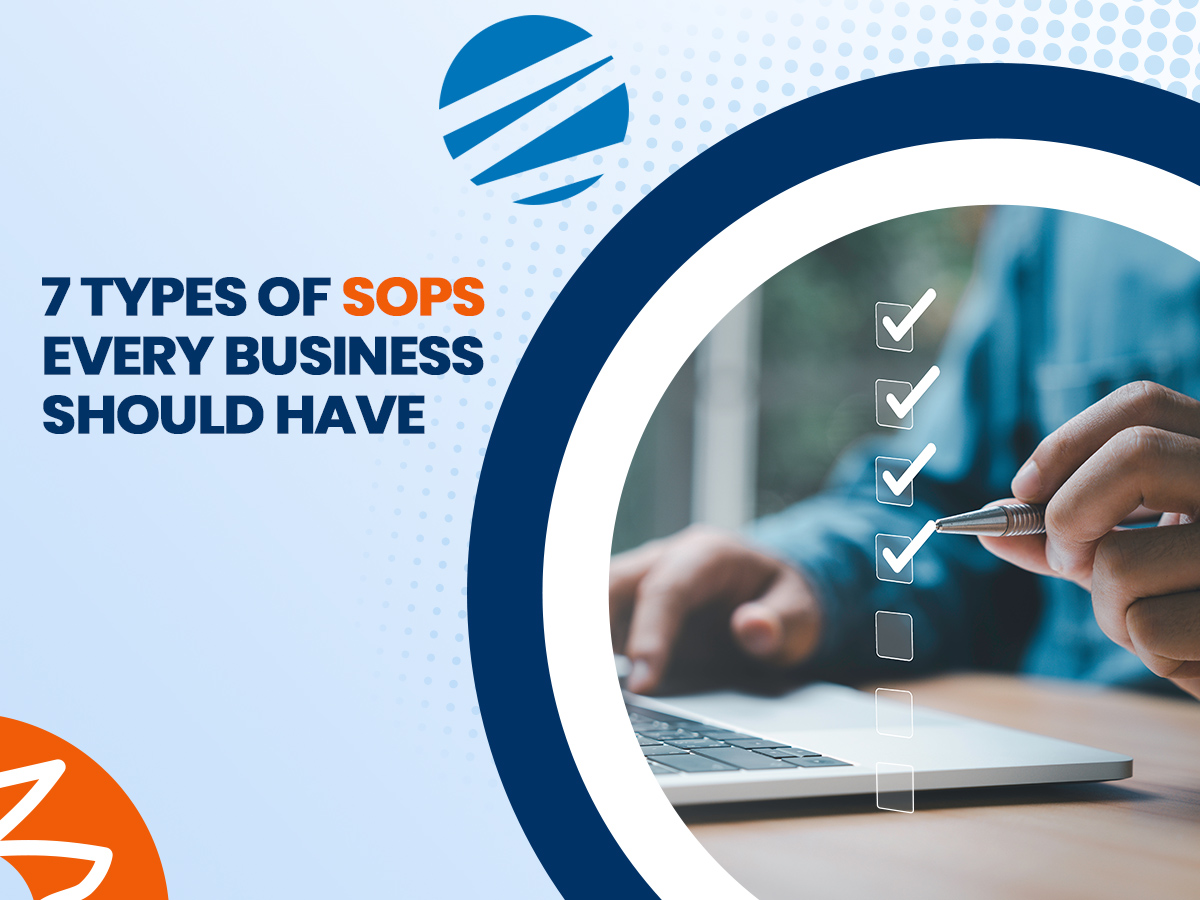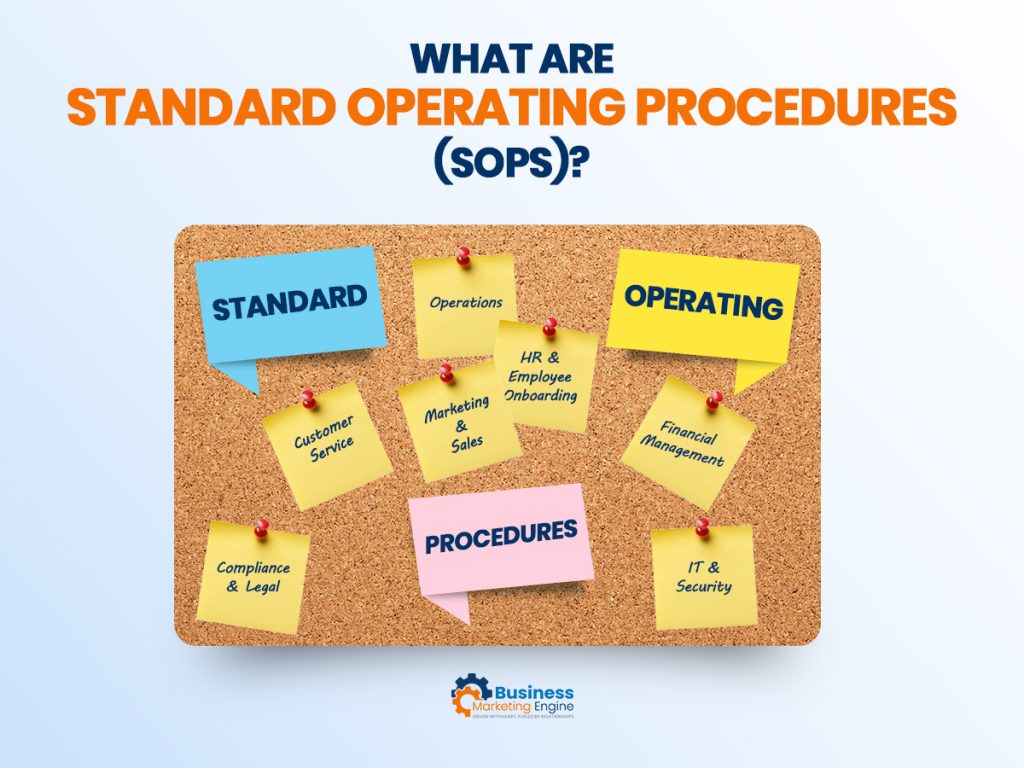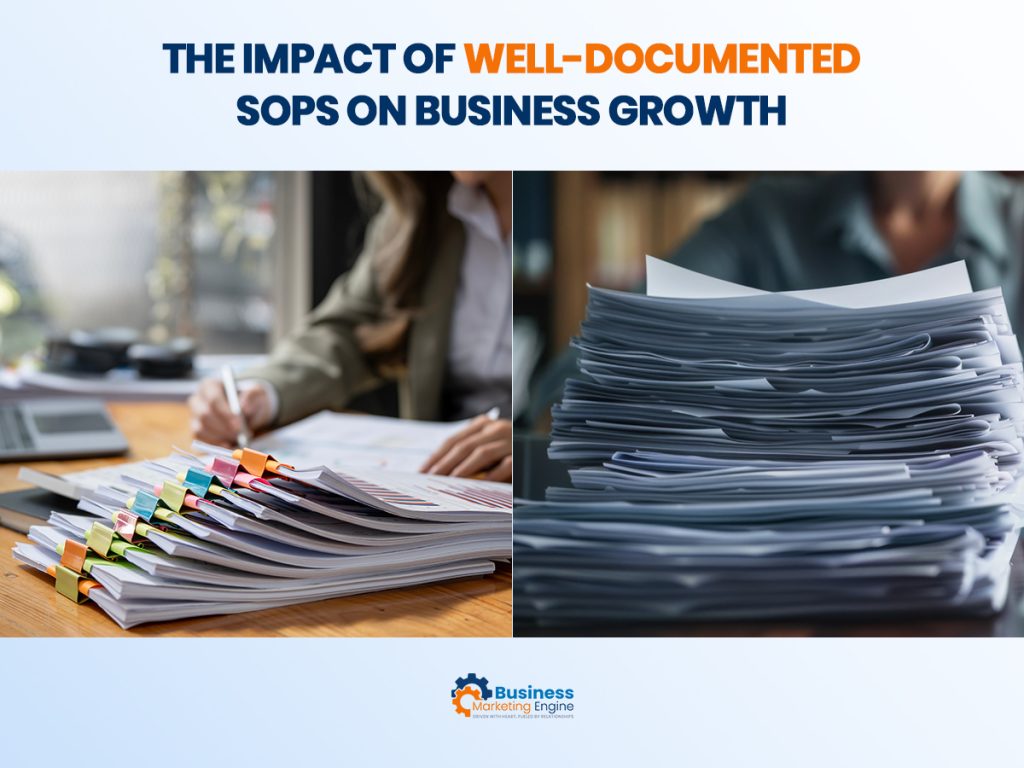Is operational chaos capping your company’s potential?
Even among high-performing organizations, unnecessary complexity and inconsistent workflows can quietly throttle growth.
As your business scales, efficiency hinges on more than just hard work—it demands clarity, rigor, and systems that scale.
World-class SOPs (Standard Operating Procedures) make that excellence repeatable at every level.
In this blog, we share 7 SOP examples every business needs to improve operational efficiency, safeguard quality, and multiply momentum.
What Are Standard Operating Procedures (SOPs)?
Defining SOPs
Standard Operating Procedures (SOPs) are detailed instructions that outline the standard practices for performing tasks and processes within business workflows. These documents help to standardize repeatable processes across teams and departments, ensuring consistency and clarity in how things are done.
Benefits of Implementing SOPs in Business
Implementing SOPs can bring many benefits to your business!
First, they enable consistency and quality control, ensuring tasks are completed correctly every single time. SOPs also make training and onboarding easier, providing clear guidance for new employees to follow. This boosts efficiency and productivity, as employees can get up to speed faster. Additionally, SOPs help reduce risks and ensure compliance by making sure everyone follows the right procedures and guidelines.
We’ll dive deeper into the powerful benefits SOPs can have on business growth later on in this blog.
7 Types Of SOPs Every Business Should Have
1. Operations SOPs
Operations SOPs focus on the day-to-day tasks that keep your business running smoothly. These include processes like order fulfillment, inventory management, and production workflows. The main benefit is that they reduce errors and ensure consistency in delivering your product or service.
2. HR & Employee Onboarding SOPs
HR SOPs outline the processes for hiring, onboarding, training, and offboarding employees. Examples include new hire orientation, payroll setup, and performance reviews. With these SOPs in place, onboarding becomes faster, and HR management runs more smoothly.
3. Marketing & Sales SOPs
These SOPs cover everything from lead generation to content creation and sales processes. Common examples include email marketing workflows, social media management, and steps in the sales funnel. They help maintain consistent messaging and optimize lead conversion.
4. Customer Service SOPs
Customer service SOPs standardize client interactions and support workflows. This includes handling customer complaints, support ticket resolution, and FAQs. By having these procedures documented, you can improve customer satisfaction and maintain consistent service quality.
5. Financial Management SOPs
Financial SOPs provide clear guidelines for managing company finances. Examples include invoicing, expense tracking, budgeting, and end-of-month reporting. These SOPs ensure accurate record-keeping and help maintain your financial health.
6. IT & Security SOPs
IT and security SOPs define the procedures for maintaining your business’s digital infrastructure and protecting data. This includes regular backups, password management, and cybersecurity protocols. These SOPs are crucial for protecting business data and minimizing security risks.
7. Compliance & Legal SOPs
Compliance SOPs focus on ensuring that your business meets all relevant regulations and legal requirements. Examples include health and safety protocols, data privacy compliance, and regulatory reporting. These procedures help reduce legal risks and ensure compliance.
How to Create Effective SOPs for Your Business
Step 1: Identify Critical Processes
Start by identifying the processes that need documentation first. Focus on the areas that directly impact your business’s priorities, such as customer service, order fulfillment, or employee onboarding. These are the processes that will benefit most from standardization.
Step 2: Break Down the Process
Once you’ve identified the processes, break them down into clear, manageable steps. Keep the instructions simple and concise, and use visuals like flowcharts when necessary to clarify complex steps. This ensures that anyone following the SOP can understand the process easily.
Step 3: Assign Responsibilities
Define who is responsible for each task outlined in the SOP. Make sure it’s clear who will maintain and update the SOPs over time. Assigning roles ensures accountability and keeps your SOPs current and relevant.
Step 4: Test and Revise
Pilot the SOP with your team to see how it performs in real scenarios. Gather feedback from those using it, and make revisions based on their input. SOPs should be living documents that evolve with your business, so continue to update them as needs change.
The Impact of Well-Documented SOPs on Business Growth
At Business Marketing Engine, we’ve experienced firsthand the incredible impact SOPs have on business growth. Here are just a few of the benefits:
Improved Productivity and Efficiency
Well-documented SOPs eliminate confusion and streamline processes, allowing employees to work more efficiently. With clear instructions, teams can complete tasks faster, freeing up time for more strategic activities.
Streamlined Training and Onboarding Processes
SOPs make training new employees a breeze. By providing a clear, standardized guide, new hires can quickly get up to speed, reducing training time and ensuring consistency.
Enhanced Ability to Scale Operations
As your business grows, SOPs help maintain consistency across teams and locations. They ensure that all employees follow the same procedures, which is essential for scaling operations effectively without sacrificing quality.
Reduced Mistakes and Improved Quality Control
With clear processes in place, employees are less likely to make errors. SOPs also help with quality control, as they provide a consistent approach to handling tasks and maintaining standards. This leads to fewer mistakes and a higher level of product or service quality.
Conclusion: Streamline Your Business with Strong SOPs
Strong Standard Operating Procedures are the backbone of any well-organized, efficient business! They not only boost productivity but also help you scale operations smoothly, reduce mistakes, and maintain high-quality standards.
If you’re ready to take your business to the next level, it’s time to start documenting your processes. At Business Marketing Engine, we’ve been using the same SOP strategies to drive growth and success for nearly two decades. And they’ve made all the difference!
Ready to optimize your business operations? Contact us today to learn how we can help streamline your workflows with effective growth strategies tailored to your needs.






